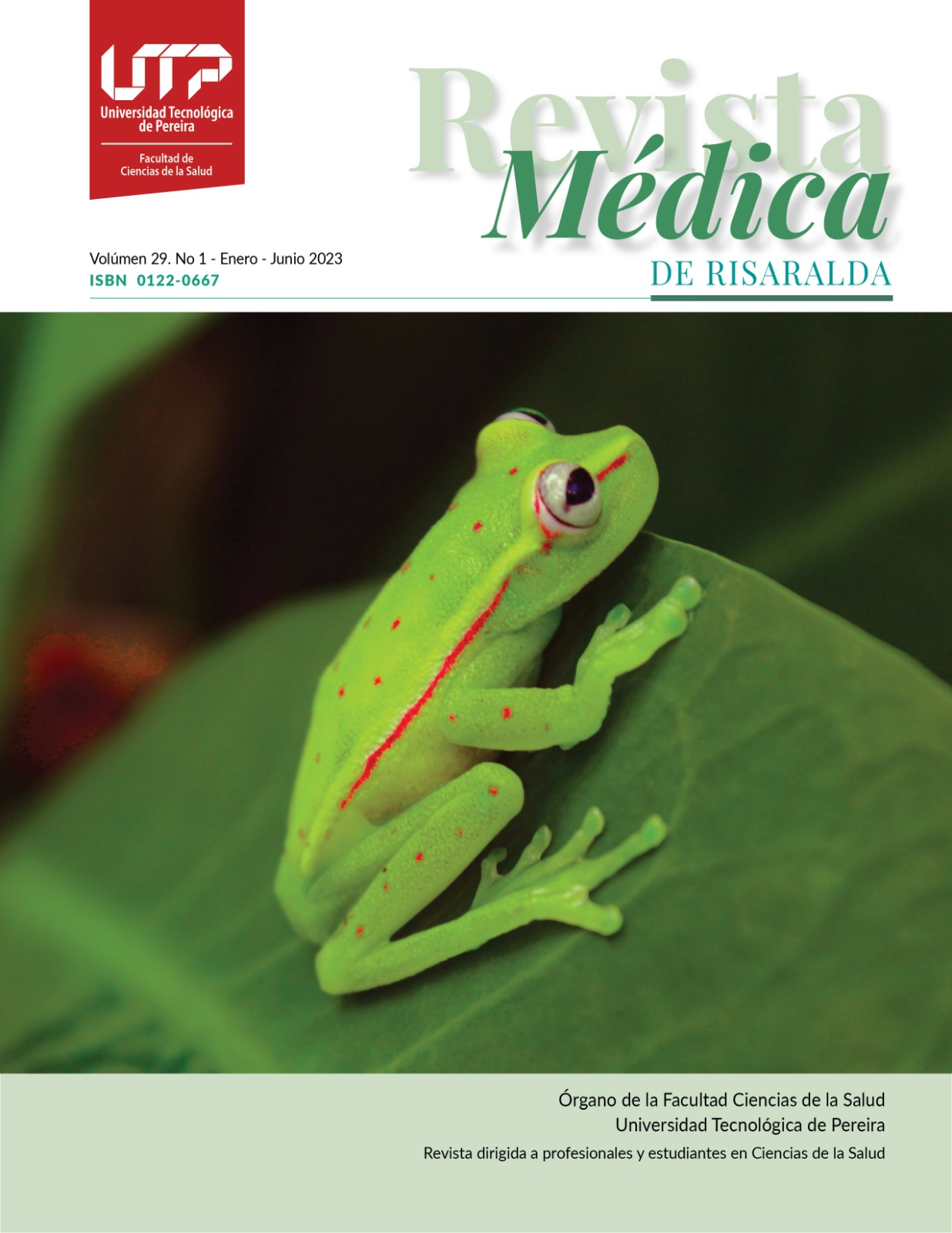Azul de metileno, opción para la marcación de cáncer colorrectal pre procedimiento mínimamente invasivo. Reporte de caso
DOI:
https://doi.org/10.22517/25395203.25097Palabras clave:
Marcación tumoral, azul de metileno, cáncer colorrectal, exeresis oncológica.Resumen
El cáncer colorrectal es una patología común que causa aproximadamente 861,000 muertes al año. Se presenta el caso de un paciente masculino de 50 años, con hipertensión arterial y Diabetes mellitus tipo II, con diagnóstico de neoplasia en colon descendente, al cual se le realizó procedimiento mínimamente invasivo, posterior a marcación tumoral con azul de metileno por medio de endoscopia de vías digestiva bajas. Postoperatorio adecuado, sin complicaciones. El tratamiento de elección para el cáncer colorrectal sin metástasis es la exeresis oncológica. Actualmente, el manejo quirúrgico recomendado es por medio de procedimiento mínimamente invasivo, sin embargo, es un desafío puesto que en algunos casos la identificación de la lesión es difícil y adicionalmente requiere una curva de aprendizaje pronunciada. Por lo anterior, utilizamos el azul de metileno para la marcación del tumor previo procedimiento, con excelentes resultados, sin complicaciones. La marcación tumoral con azul de metileno previa al procedimiento mínimamente invasivo es seguro, útil, económico y de bajo riesgo.
Descargas
Citas
Pointet A, Taieb J. Cáncer de colon. Colloids Surfaces A Physicochem Eng Asp [Internet]. 2017;21(1):1–7. Available from: http://dx.doi.org/10.1016/S1636-5410(16)81792-4
Ferlay J, Soerjomataram I, Dikshit R, Eser S, Mathers C, Rebelo M, et al. Cancer incidence and mortality worldwide: sources, methods and major patterns in GLOBOCAN 2012. Int J cancer [Internet]. 2015 Mar 1 [cited 2019 Sep 20];136(5):E359-86. Available from: http://www.ncbi.nlm.nih.gov/pubmed/25220842
Sistema de Información de Cáncer en Colombia [Internet]. [cited 2021 Feb 2]. Available from: https://www.infocancer.co/portal/#!/filtro_incidencia/
Global Cancer Observatory [Internet]. [cited 2021 Feb 2]. Available from: https://gco.iarc.fr/
, et al. Localización y clínica asociada al cáncer de colon. Hospital Nacional Arzobispo Loayza: 2009 - 2013. Horiz Médico. 2015;15(2):49–55.
Lee GH, Malietzis G, Askari A, Bernardo D, Al-Hassi HO, Clark SK. Is right-sided colon cancer different to left-sided colorectal cancer? - A systematic review. Eur J Surg Oncol [Internet]. 2015;41(3):300–8. Available from: http://dx.doi.org/10.1016/j.ejso.2014.11.001
Vogel JD, Eskicioglu C, Weiser MR, Feingold DL, Steele SR. The American society of colon and rectal surgeons clinical practice guidelines for the treatment of colon cancer. Dis Colon Rectum. 2017;60(10):999–1017.
Dong B, Luo Z, Lu J, Yang Y, Song Y, Cao J, et al. Single-incision laparoscopic versus conventional laparoscopic right colectomy: A systematic review and meta-analysis. Int J Surg [Internet]. 2018;55(1):31–8. Available from: https://doi.org/10.1016/j.ijsu.2018.05.013
Mathis KL, Nelson H. Controversies in laparoscopy for colon and rectal cancer. Surg Oncol Clin N Am. 2014;23(1):35–47.
Brahma B, Putri RI, Sari L, Karsono R, Purwanto DJ, Gautama W, et al. The application of 1% methylene blue dye as a single technique in breast cancer sentinel node biopsy. J Vis Exp. 2019;2019(148):1–6.
Cabrera S, Bebia V, Franco-Camps S, Forcada C, Villasboas-Rosciolesi D, Navales I, et al. Technetium-99m-indocyanine green versus technetium-99m-methylene blue for sentinel lymph node biopsy in early-stage endometrial cancer. Int J Gynecol Cancer. 2020;30(3):311–7.
Bara T, Gurzu S, Jung I, Borz C, Banias L, Bara T. Sentinel node biospy using intravital blue dye. Medicine (Baltimore). 2019;98(12):e14951.
Bottaro, Larsen B. 基因的改变NIH Public Access. Bone. 2008;23(1):1–7.
Kiesslich R, Fritsch J, Holtmann M, Koehler HH, Stolte M, Kanzler S, et al. Methylene blue-aided chromoendoscopy for the detection of intraepithelial neoplasia and colon cancer in ulcerative colitis. Gastroenterology. 2003;124(4):880–8.
Repici A, Wallace MB, East JE, Sharma P, Ramirez FC, Bruining DH, et al. Efficacy of Per-oral Methylene Blue Formulation for Screening Colonoscopy. Gastroenterology [Internet]. 2019;156(8):2198-2207.e1. Available from: https://doi.org/10.1053/j.gastro.2019.02.001
Descargas
-
Vistas(Views): 1198
- PDF Descargas(Downloads): 253
Publicado
Versiones
- 2023-07-13 (2)
- 2023-06-29 (1)
Cómo citar
Número
Sección
Licencia
Cesión de derechos y tratamiento de datos
La aceptación de un artículo para su publicación en la Revista Médica de Risaralda implica la cesión de los derechos de impresión y reproducción, por cualquier forma y medio, del autor a favor de Facultad de Ciencias de la Salud de la Universidad Tecnológica de Pereira. 1995-2018. Todos los derechos reservados ®
por parte de los autores para obtener el permiso de reproducción de sus contribuciones. La reproducción total o parcial de los trabajos aparecidos en la Revista Médica de Risaralda, debe hacerse citando la procedencia, en caso contrario, se viola los derechos reservados.
Asimismo, se entiende que los conceptos y opiniones expresados en cada trabajo son de la exclusiva responsabilidad del autor, sin responsabilizarse ni solidarizarse, necesariamente, ni la redacción, ni la editorial.
Es responsabilidad de los autores poder proporcionar a los lectores interesados copias de los datos en bruto, manuales de procedimiento, puntuaciones y, en general, material experimental relevante.
Asimismo, la Dirección de la revista garantiza el adecuado tratamiento de los datos de carácter personal



